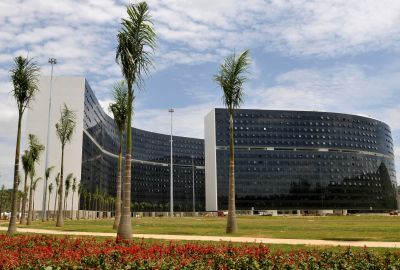Brazil unveils daring new Niemeyer design

Your support helps us to tell the story
From reproductive rights to climate change to Big Tech, The Independent is on the ground when the story is developing. Whether it's investigating the financials of Elon Musk's pro-Trump PAC or producing our latest documentary, 'The A Word', which shines a light on the American women fighting for reproductive rights, we know how important it is to parse out the facts from the messaging.
At such a critical moment in US history, we need reporters on the ground. Your donation allows us to keep sending journalists to speak to both sides of the story.
The Independent is trusted by Americans across the entire political spectrum. And unlike many other quality news outlets, we choose not to lock Americans out of our reporting and analysis with paywalls. We believe quality journalism should be available to everyone, paid for by those who can afford it.
Your support makes all the difference.The state of Minas Gerais in southeastern Brazil on Thursday unveiled a glittering new government complex by legendary architect Oscar Niemeyer, still showing a flair for dramatic design at the age of 102.
His latest creation covers an expanse of 804,000 square meters, including a 265,000 square meter building housing the new seat of government.
With the opening of the new complex, Belo Horizonte, the regional capital of Minas Gerais, becomes the city with the greatest number of buildings by Niemeyer - 14.
During his seven-decade career, Niemeyer has designed more than 600 projects around the world, and is famous for some of Brazil's most distinctive buildings.
His works include a suite of government building in the national capital city Brasilia and the headquarters for the United Nations in New York.
Later this year he is to unveil the Aviles International Cultural Center in Spain.
Niemeyer also is overseeing the renovation of the central avenue of the Sambodrome, where the most famous of Brazil's glitz-and-flesh Carnival parades are held.
The architect, who was born in 1907 in Rio de Janeiro, where he still lives, said in a recent interview that the curves and sweeping lines that typify his style were inspired by "the body of the Brazilian woman."
His numerous awards include the Pritzker, the Nobel prize of architecture, which he won in 1988.
Join our commenting forum
Join thought-provoking conversations, follow other Independent readers and see their replies
Comments